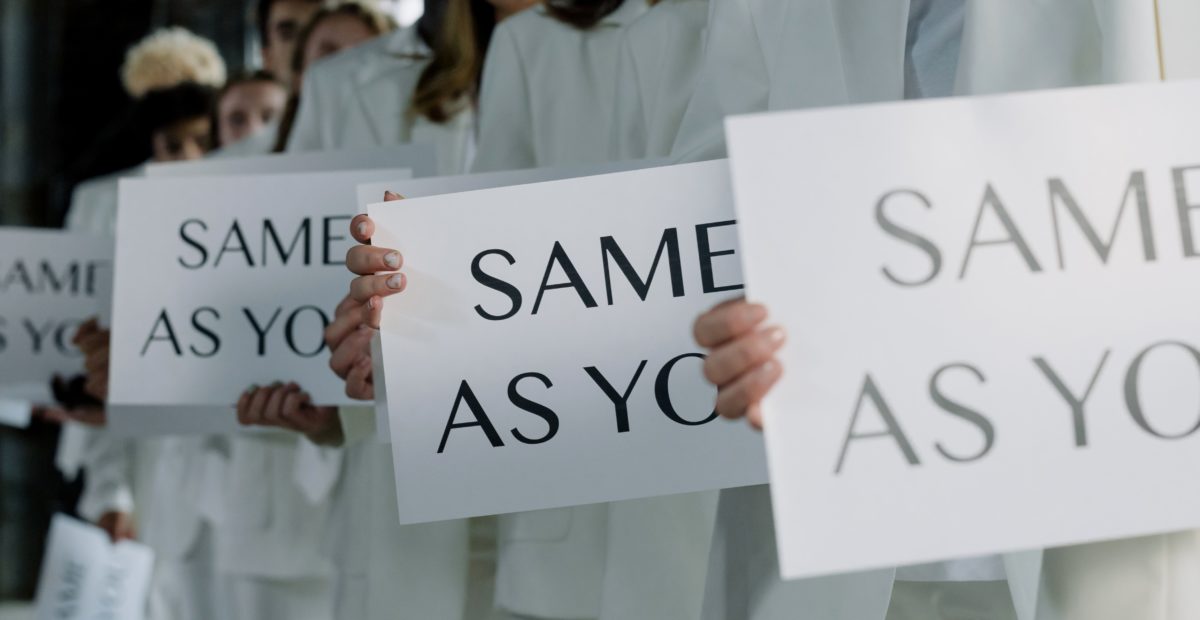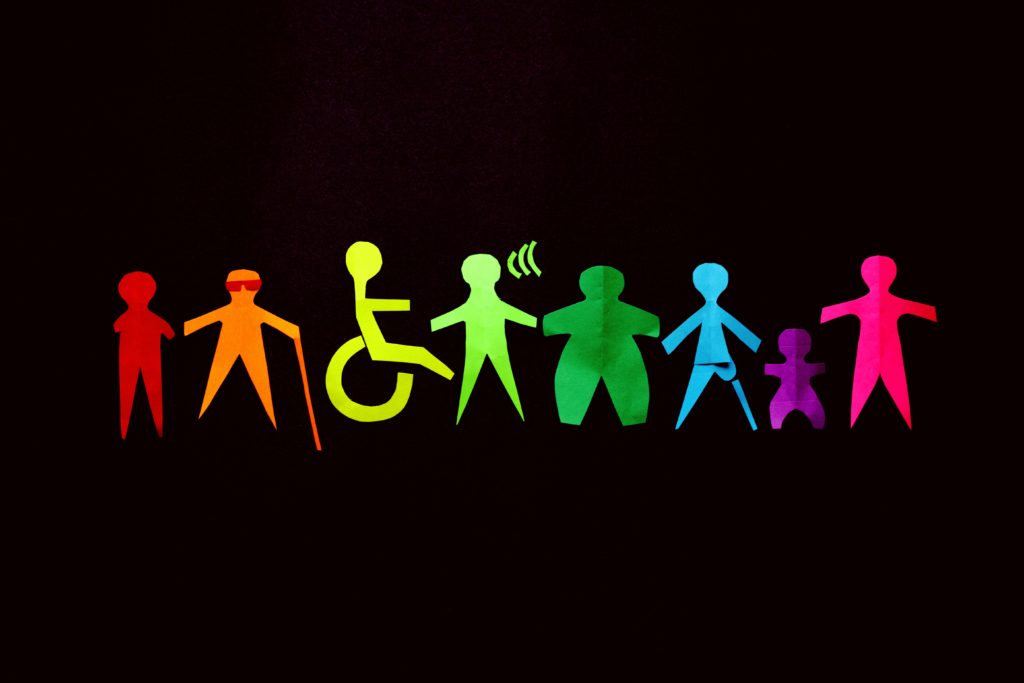Unconscious Bias: Questions & Answers

Featured image by cottonbro studio, Pexels.com
Blog post updated on 31st January 2022
Unconscious bias occurs when social stereotypes about particular people or groups impact a person’s judgement without them realising. All organisations and teams have unconscious assumptions about different social and identity groups, influenced by individual’s backgrounds, social environments and personal experiences.
1) What types of unconscious bias are there?

Image by Sora Shimazaki, Pexels.com
- Affinity Bias This leads us to favour people who we believe we have a connection or a similarity to. For example, we tend to be warmer towards someone we attended college with but colder towards someone we do not have a personal connection with. A person who conducts interviews may choose the candidate they had a personal connection with as their first choice, whereas they may select the candidate they had nothing in common with as their second choice.
- Halo Effect The Halo Effect happens when we acknowledge a prominent thing about an individual and let that “halo” cloud our judgment of everything else about them.An instance of this is seeing a person who went to a respected university such as Oxford or Cambridge, or if someone has an honour like OBE, MBE etc. – As humans, we can let these accomplishments shape how we see other elements of a person.
- Horns Effect The Horns Effect is the literal reverse of the Halo effect, and happens when a single “bad” attribute disproportionately determines opinions of a person. An instance of this is judging someone based on their personal style or look. A person may believe they are careless and unsuitable for their company, even though suitability and work ethics are not linked to the clothes you wear.
- Attribution Bias Attribution bias influences how we appraise individuals and their accomplishments. It can be especially prominent throughout the recruitment process. When evaluating themselves, people can often think of their accomplishments as a direct effect of their character and disposition; while shortcomings are usually the effect of outside circumstances. These external circumstances could be a person that negatively impacted them and restricted them from doing their best. When it comes to valuing future employees, employers regularly think the opposite is correct. It is more likely to see accomplishments of others coincidental and their shortcomings as a consequence of their character.
- Confirmation Bias Confirmation bias is searching for, understanding, focusing or remembering experiences that support preconceived notions. Hiring managers need to be particularly vigilant about this particular bias.
2) What is the difference between explicit bias and unconscious bias?

Image by Markus Spiske, Pexels.com
Unconscious bias (or implicit bias) is a personal preference that an individual is oblivious to, and occurs outside of their power. Unconscious biases are usually the consequence of stereotypes and messages we receive from the world around us. It could be as simple as not having a diverse workforce and therefore seeing people from other groups as “unknown”.
Explicit biases are biases consciously held against certain groups of people, situations, or things.
3) Why is unconscious bias training important?

Image by Ann H, Pexels.com
Unconscious bias training can transform offices and teams. Unconscious biases that people hold can lead to discrimination, prejudice, and can negatively affect a team’s performance. These biases can also influence recruitment, affecting the potential employee negatively and a team if the right person for the job is overlooked due to the unconscious biases of the recruitment team.
4) Are there any strategies to overcome or control unconscious bias?

Image by Pixabay, Pexels.com
- Expand your connections with the groups you do not typically connect with.
- Consider how you form your opinions of people. Are you being unconsciously biased?
- Attend training courses on difference and diversity
- Be open-minded and question social norms
- Seek out new experiences with diverse people
- Actively listen to other people’s experiences and perspectives
5) How does unconscious bias occur in the workplace?

Image by Elevate Digital, Pexels.com
In the recruiting process, unconscious bias can occur when employers build an assumption about applicants based only on their initial impressions.
They may favour an applicant over another based on personal preferences. An example of this can be when employers believe one interviewee would be more enjoyable in a social setting, rather than focusing on what the interviewee can offer to the business.
Employers can also unknowingly discriminate against certain groups of people, as people tend to want to employ people who look and act like themselves. In time, this can lead to a non-diverse workforce.
Unconscious bias in workplaces can hinder diversity, hiring and retention initiatives, leading to a negative company culture. Unconscious bias can influence who gets a job, career development, and more. All of the above automatically weaken a company’s culture.
6) How do you avoid unconscious bias in the workplace?

Image by Ron Lach, Pexels.com
- Be aware of and accept that we all have unconscious biases.
- Advertise a job vacancy in at least 3 different places. This enables people from various backgrounds to apply for the role.
- Encourage recruiting managers to agree to make each other aware if they notice any stereotyping.
- Arrange a neurodiversity workshop with Exceptional Individuals for your organisation
- Hold back some details on application forms, such as the candidate’s date of birth and gender. This is called “blind sifting” and including such details could affect the opinions of recruitment managers.
- Conduct interviews over the phone where possible so that the interviewer does not make decisions based on the candidate’s physical appearance
- At each stage of the recruitment process, have a diverse range of people sifting job applications, interviewing applicants and deciding who gets the job.
- Keep a written record of why decisions were made.
- Pay attention to bias related to protected characteristics. These characteristics include age, disability, gender, ethnicity, maternity, religion, and marital status.
- Widen your social circle, such as spending time with people from different cultural and educational backgrounds.
- Avoid making assumptions or relying on “gut instinct”.
- Speak out if you notice unconscious bias and acknowledge where you may have been wrong.
7) Can unconscious bias impact on inclusion?

Image by Katie Rainbow, Pexels.com
Yes.
Biases in the professional world can create obstacles that restrict teams from accomplishing their joint goals efficiently. It can also impair the growth of inclusive connections that promote original and innovative thoughts.
8) What is the aim of the training?

Image by fauxels, Pexels.com
Unconscious bias training is intended to present their already existing biases to teams. Trainers will use means to change habitual thoughts, and sequentially reduce prejudicial practices. A significant element of relevant workshops is building a stronger awareness for types of biases that exist.
9) Why is unconscious bias training important?

Image by ANTONI SHKRABA, Pexels.com
Supporting diversity and inclusion efforts is important in today’s increasingly diverse workplace. This includes companies that specialise in hiring neurodiverse people.
Employers must provide employees with foundational anti-harassment and anti-discrimination training. Employers should also provide unconscious bias training for employees.
Effective unconscious bias training helps employees understand that unconscious biases exist. The training also helps them take steps to reduce the likelihood of biases impacting their decisions and interactions with others in the workplace.
Firstly, training should not “preach” to employees. Unconscious bias training should foster conversations and allow employees to confront their own biases. Training should not be about blaming and shaming employees.
Secondly, training should not imply that people are intentionally racist, sexist, or discriminatory against other protected characteristics. These biases, by their nature, are unconscious and unintentional.
Thirdly, training should explain that everyone can either be a victim or a perpetrator of unconscious bias.
Training should also teach employees tangible steps they can take to make the workplace more inclusive. They include avoiding labels and overgeneralisations; and questioning automatic assumptions.
Training employees on these practices is the first step in helping them recognise and combat their unconscious biases.
10) How is unconscious bias training typically delivered?

Image by fauxels, Pexels.com
- Inclusive actions that build better teams; systems and processes that ensure hiring of the best talent; and thinking differently and driving innovation.
- Making trainings voluntary
- Focusing on actions. These include getting to know people from unfamiliar groups and social circles; changing repeated messages in our environment by interacting with those who provide a counterpoint to it.
- Taking action in informal situations
- Learning to question assumptions
Follow ups can include:
- Holding 1:1 sessions with participants to see how things are progressing
- Posting suggestions or notices in communal areas such as, “Who are you inviting to lunch today?” in a breakout room
- Having staggered training sessions
- Having open access to point-of-need trainings
Exceptional Individuals offer neurodiversity workshops and training to tackle unconscious bias in the workplace.
Do you have any more questions on unconscious bias in the workplace? Give us a call on 0208 133 6046 or fill out our contact form.




